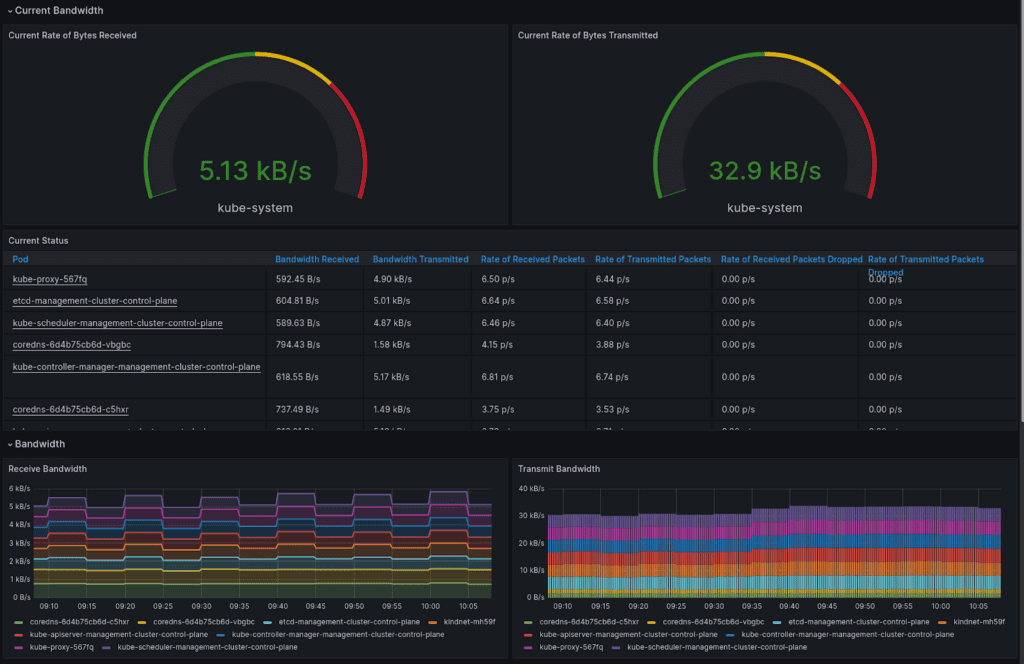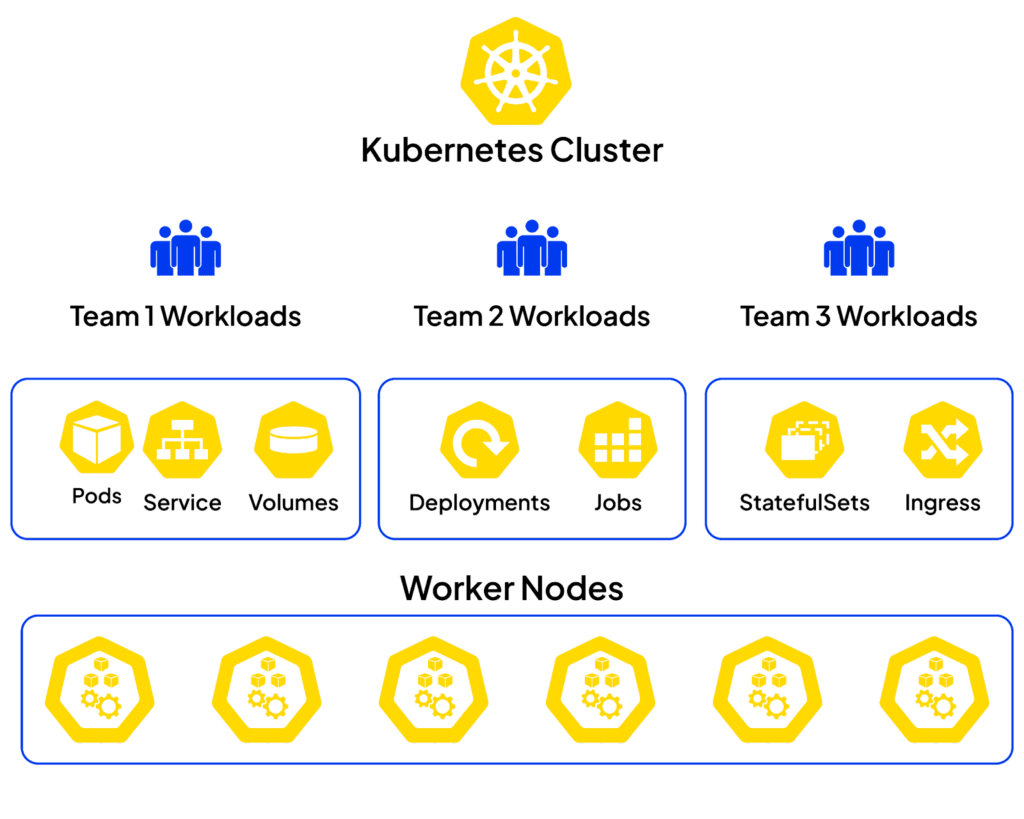In “Introduction to Kubernetes Multi-Tenancy,” you’ll discover how Kubernetes enables multiple tenants to share the same infrastructure. Gone are the days of creating separate clusters for each tenant, as this approach leads to complexity and high costs. Instead, Kubernetes offers administrators the ability to create a shared infrastructure where tenants can run isolated workloads. We’ll explore the two popular approaches to Kubernetes multi-tenancy – namespace-level tenancy and virtual cluster multi-tenancy – as well as common use cases and the key components required for implementation. With a focus on observability and considering tenant requirements, this article will equip you to effectively manage multi-tenant clusters while minimizing operational overhead.

Understanding Kubernetes Multi-Tenancy
Definition of Kubernetes Multi-Tenancy
Kubernetes multi-tenancy refers to the ability of multiple tenants to share the same Kubernetes infrastructure. This means that different teams, environments, or customers can utilize the same cluster while keeping their workloads and resources separated for better efficiency and scalability.
Benefits of Kubernetes Multi-Tenancy
There are several benefits to implementing multi-tenancy in Kubernetes. Firstly, it allows for better resource utilization, as multiple tenants can share the same infrastructure instead of creating separate clusters for each tenant. This leads to cost savings and reduces the complexity of managing multiple clusters.
Additionally, multi-tenancy enables improved scalability and flexibility. As tenants can dynamically allocate resources based on their needs, it becomes easier to scale up or down based on workload demands. This ensures optimal performance across different workloads without the need for manual intervention.
Overall, Kubernetes multi-tenancy promotes better collaboration, efficiency, and resource management among different tenants, making it an advantageous approach for organizations.
Challenges of Traditional Approach
The traditional approach to multi-tenancy in Kubernetes involves creating separate clusters for each tenant. However, this approach comes with several challenges. Firstly, managing and maintaining multiple clusters is complex and time-consuming for administrators. It requires monitoring and scaling each cluster individually, which can lead to higher operational overhead.
Moreover, the traditional approach creates additional costs as each cluster requires its own set of resources. This can be financially burdensome for organizations with a large number of tenants.
Another challenge is the lack of resource utilization. Each cluster operates independently, resulting in potentially underutilized resources across the infrastructure. This inefficiency can lead to higher costs and wasted resources.
Approaches to Kubernetes Multi-Tenancy
Namespace-Level Tenancy
Namespace-level tenancy is a popular approach to implementing multi-tenancy in Kubernetes. It involves creating separate namespaces for each tenant within a shared cluster. Each namespace acts as an isolated virtual cluster, allowing tenants to deploy their workloads without interfering with others.
This approach provides resource isolation at the namespace level, ensuring that tenants cannot access or impact each other’s resources. It also simplifies management and allows for a better overview of the entire cluster.
Virtual Cluster Multi-Tenancy
Virtual cluster multi-tenancy is another approach to Kubernetes multi-tenancy. It utilizes tools and platforms like Rancher or OpenShift to create virtual clusters within a shared infrastructure. Each virtual cluster can have its own set of resources, network policies, and access controls, providing full isolation between tenants.
This approach offers the advantage of complete separation between tenants, similar to traditional cluster per tenant approach. However, it still allows for better resource utilization and management compared to the traditional approach.

Common Use Cases for Kubernetes Multi-Tenancy
Multi-Team Tenancy
Multi-team tenancy is a common use case for Kubernetes multi-tenancy. In organizations with multiple teams or departments, each team can have its own namespace or virtual cluster to manage and deploy their workloads independently. This promotes collaboration and autonomy while maintaining resource isolation.
Multi-Environment Tenancy
In the context of software development, multi-environment tenancy is a popular use case for multi-tenancy in Kubernetes. It allows organizations to have separate namespaces or virtual clusters for development, testing, and production environments. This ensures that each environment operates independently, minimizing the risk of conflicts or disruptions.
Multi-Customer Tenancy
For organizations providing services to multiple customers, multi-customer tenancy is crucial. With this approach, each customer can be allocated their own namespace or virtual cluster to run their workloads. This ensures that each customer’s data and resources are completely isolated, providing security and compliance.
Configuring Multi-Tenancy in Kubernetes
Role-Based Access Control (RBAC)
RBAC is a fundamental part of multi-tenancy in Kubernetes. It allows administrators to define different roles and access levels for each tenant. By granting permissions at the namespace or virtual cluster level, administrators can ensure that tenants only have access to their own resources and cannot interfere with others.
NetworkPolicies
NetworkPolicies enable administrators to enforce network segmentation and isolation between tenants. By defining network policies, administrators can restrict communication between different namespaces or virtual clusters, providing an additional layer of security and resource isolation.
ResourceQuotas
ResourceQuotas allow administrators to allocate resource limits for each namespace or virtual cluster. This ensures that tenants cannot consume more resources than they are allocated, preventing resource contention and ensuring fair resource distribution.
StorageClasses
StorageClasses enable administrators to define different storage options and policies for each tenant. This allows tenants to choose the appropriate storage class for their workloads, ensuring efficient and optimized storage utilization.
PersistentVolumes
PersistentVolumes provide a way to allocate and manage storage resources for each tenant. Administrators can provision and assign PersistentVolumes to different namespaces or virtual clusters, ensuring data persistence and availability specific to each tenant.

Importance of Observability in Multi-Tenant Clusters
Monitoring and Logging
Effective monitoring and logging are essential in managing multi-tenant clusters. Administrators should monitor resource utilization, performance, and application health across different tenants. This ensures proactive identification of potential issues and allows for timely troubleshooting.
Alerting and Notifications
Alerting and notifications play a crucial role in multi-tenant clusters. Administrators should set up alerts and notifications for critical events or issues, enabling them to respond quickly and mitigate potential disruptions or violations.
Troubleshooting and Debugging
In a multi-tenant environment, troubleshooting and debugging can be complex due to the interaction between different workloads. Administrators should have access to tools and techniques that facilitate the identification and resolution of issues within specific tenants without impacting others.
Considerations for Selecting a Multi-Tenancy Approach
Tenant Requirements
When selecting a multi-tenancy approach, it is crucial to consider the specific requirements of each tenant. Some tenants may require higher levels of isolation and security, while others may prioritize resource optimization and flexibility. Understanding tenant needs is essential in choosing the most suitable approach.
Operational Overhead
Different multi-tenancy approaches have varying levels of operational overhead. Administrators should consider the complexity and effort required to manage and maintain each approach. It is important to strike a balance between ease of management and the desired level of isolation and resource utilization.
Scalability and Performance
Scalability and performance are critical factors in selecting a multi-tenancy approach. The chosen approach should be able to scale seamlessly to accommodate increasing workloads and ensure consistent performance across tenants.
Isolation and Security
Isolation and security are paramount in multi-tenant clusters. Administrators should evaluate how well each approach provides isolation between tenants and prevents unauthorized access or interference. Strong security measures, such as RBAC and network policies, should be implemented to safeguard tenant resources.

Best Practices for Managing Multi-Tenant Clusters
Clear Documentation and Communication
Clear documentation and communication are essential for managing multi-tenant clusters. Administrators should provide tenants with comprehensive documentation on the available resources, access controls, and procedures. Regular communication channels should be established to address any concerns or issues that may arise.
Regular Auditing and Compliance Checks
Regular auditing and compliance checks are crucial for maintaining the integrity and security of multi-tenant clusters. Administrators should perform regular audits to ensure that tenants are adhering to the defined policies and to identify any potential vulnerabilities or compliance issues.
Automation and Orchestration
Automation and orchestration enable efficient management of multi-tenant clusters. Administrators should leverage tools and technologies that automate provisioning, scaling, and maintenance tasks. This reduces manual effort and increases operational efficiency.
Continuous Monitoring and Performance Optimization
Continuous monitoring and performance optimization are key aspects of managing multi-tenant clusters. Administrators should regularly monitor resource utilization, performance metrics, and application health. Any bottlenecks or areas for improvement should be identified and addressed proactively.
Capacity Planning and Resource Allocation
Capacity planning and resource allocation are critical to ensure optimal resource utilization and scalability. Administrators should analyze resource usage trends and plan for future growth. This includes allocating resources based on tenant requirements and adjusting resource limits as needed.
Security Considerations for Multi-Tenancy
Authentication and Authorization
Effective authentication and authorization mechanisms are essential in securing multi-tenant clusters. Strong identity management practices should be implemented, including user authentication, role-based access controls, and secure token management to prevent unauthorized access.
Encryption and Data Protection
Encryption and data protection are vital for securing sensitive data in multi-tenant clusters. Administrators should implement encryption techniques to protect data both at rest and in transit. This includes securely managing keys and certificates and implementing secure communication protocols.
Vulnerability Management
Vulnerability management is crucial in multi-tenant clusters to minimize the risk of exploitation. Regular vulnerability assessments and patch management processes should be implemented to identify and mitigate any vulnerabilities in the environment.
Incident Response and Forensics
Having a robust incident response and forensics plan is vital for handling security incidents in multi-tenant clusters. Administrators should establish procedures for detecting and responding to security breaches promptly. Additionally, mechanisms for collecting and analyzing forensic data should be implemented to aid in post-incident analysis and remediation.
Scaling and Scaling Policies for Multi-Cloud Kubernetes
Horizontal Pod Autoscaling (HPA)
Horizontal Pod Autoscaling allows Kubernetes to automatically adjust the number of pods in a deployment based on resource utilization metrics. It is a useful approach for scaling individual workloads within a multi-tenant cluster, ensuring efficient resource allocation and optimal performance.
Vertical Pod Autoscaling (VPA)
Vertical Pod Autoscaling is another scaling mechanism that adjusts the resource limits of individual pods based on measured resource utilization. It is particularly useful for optimizing resource allocation within a single tenant’s workload, ensuring that pods have the necessary resources to operate efficiently.
Cluster Autoscaling
Cluster Autoscaling allows Kubernetes to dynamically adjust the size of the cluster based on demand. This ensures optimal resource utilization across multiple tenants and provides the ability to scale up or down based on workload requirements.
Policy-Based Autoscaling
Policy-Based Autoscaling allows administrators to define custom scaling policies based on specific conditions or metrics. This caters to the unique needs of individual tenants and allows for more granular control over the scaling process.
Container-Level Autoscaling
Container-Level Autoscaling enables Kubernetes to automatically adjust the resource limits of individual containers within a pod. This ensures that each container within a multi-tenant cluster has the necessary resources to meet its specific demands, improving resource utilization and performance.
Conclusion
Summary of Kubernetes Multi-Tenancy
Kubernetes multi-tenancy allows multiple tenants to efficiently share the same infrastructure by providing isolation and resource allocation at the namespace or virtual cluster level. This approach promotes collaboration, scalability, and cost savings compared to traditional approaches of creating separate clusters for each tenant.
Considerations for Successful Implementation
To successfully implement multi-tenancy in Kubernetes, administrators should consider tenant requirements, operational overhead, scalability, and security. Best practices such as clear documentation, regular auditing, automation, and continuous monitoring should be followed. Additionally, security considerations, including authentication, encryption, vulnerability management, and incident response plans, are vital to ensure the integrity and safety of multi-tenant clusters.
By understanding the benefits, challenges, and best practices associated with Kubernetes multi-tenancy, organizations can harness this powerful feature to efficiently manage their resources, enhance collaboration, and drive business success. Talk to us today if you need an implementation partner for your multi-tenancy solution or to discuss if multi-tenancy is the right option for you.




